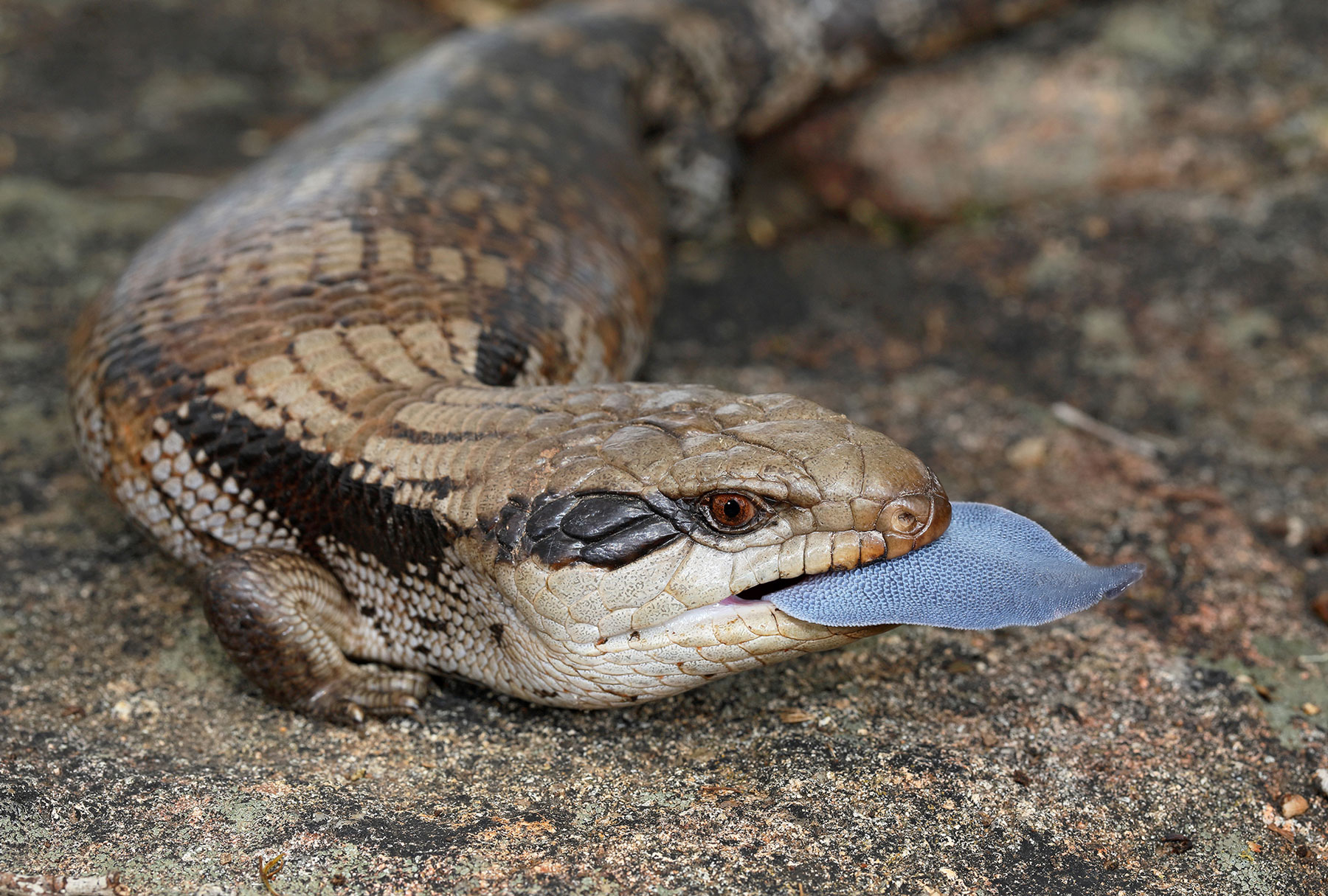By Merlin Tzaros, Wangaratta – age 13, who has had a keen interest in nature, especially reptiles, for several years.
One of the most iconic, well-known, and likeable reptiles in Australia can be found in most backyards in north-east Victoria. The Eastern Blue-tongue is a species of skink ranging in many different colour forms and patterns. They are the largest species of blue-tongue in Australia, equal in size to its desert-dwelling cousin, the Western Blue-tongue. These popular little critters are known for their spectacular defence display, where they flatten their bodies to look more imposing to potential threats, make a deep, low, hissing noise, and, most importantly, open their mouths wide and stick out that brilliant blue tongue!! These vibrant hues are a universal symbol in the natural world: the more colourful it is, the more deadly it is. However, some creatures can trick predators into believing that they are dangerous, when really, they are absolutely harmless, and the Eastern Blue-tongue is no exception.
They eat mainly vegetable matter (up to 90% of their diet is made up of plants), particularly berries and flowers. However, the Eastern Blue-tongue sometimes preys on insects, such as slow-moving beetles, and snails. This can cause quite a problem, as many people use snail pellets, which, like many other poisons, stays in a snail’s system even after it has died. This means that when any unlucky Blue-tongue consumes a poisoned snail, it too is poisoned. There are many alternatives to snail pellets, such as lime, crushed eggshells, and wood ash, which can be scattered in rings around certain areas to act as barriers against snails. Utilising these other options will make a huge difference when it comes to keeping our little friends safe.
The Eastern Blue-tongue is monogamous, meaning that it mates with the same partner for its entire life. They spend most of the year by themselves, foraging alone and roaming around, but when spring comes, they follow scent tracks left by their partner, and, amazingly, find their way back to their mate to reproduce. The Eastern Blue-tongue is a common but cute little beast with complex and intriguing behaviour. Please help these lizards by using the alternative options to snail pellets, keeping small patches of blue-tongue habitat in your backyard – bits of leaf litter, bark, and fallen logs – and keeping your dog away from the lizards if you see one.


